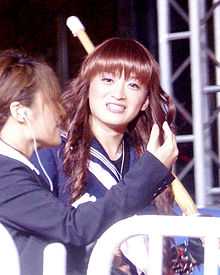Otokonoko

In contemporary Japanese culture, otokonoko (男の娘, lit. "male girl"), or otoko no musume, refers to men who cross-dress as women.[1]
The term originated in Japanese manga[2] and Internet culture in the 2000s, but the concept reflects a broad range of earlier traditions and examples of male drag-wearing in Japan, such as onnagata in kabuki theater, and in the career of cross-dressing entertainer Akihiro Miwa. Otokonoko is a play on the word 男の子, also pronounced otokonoko and meaning "boy". Associated with otaku culture, it has given rise to dedicated maid cafés, fashion stores and a range of popular media. It is often combined with the cosplay of female fictional characters by men.[1]
The concept of otokonoko does not correspond to a Western category of sexual identity or to transsexualism. Otokonoko may be of any sexual orientation.[1][2]
By extension, otokonoko also refers to a genre of media and fiction about cross-dressing men, aimed at a male audience. It is part of the spectrum of shōnen entertainment (targeted at young boys) and seinen entertainment (targeted at young men), and often contains erotic or romantic elements. Otokonoko characters have also begun to appear in mainstream Japanese popular entertainment such as manga, anime and video games.[1]
References
- ↑ 1.0 1.1 1.2 1.3 Ashcraft, Brian (26 May 2011). "What Is Japan's Fetish This Week? Male Daughters". Kotaku. Retrieved 5 January 2014.
- ↑ 2.0 2.1 "OTOKONOKO : DES GARÇONS TROP MIGNONNES". Vice. 8 August 2013. Retrieved 5 January 2014.